When and how you prune your tomato plants can make a huge difference in your plant’s health, vitality, and overall production.
Pruning tomato plants and pinching off sucker stems are two of the best ways to help plants grow better. And the earlier you get started in the process, the better!
Left to grow as they please, tomato plants will morph into a tangled mess of stems, shoots, roots and leaves. And that mess is more than just an eyesore. It also robs the plant of the air, light and the nutrients needed for better bloom and tomato production.
Why To Prune Tomato Plants
Tomato plants require a lot of nutrients to grow and produce. Unfortunately, there are a limited amount of resources in the soil available to feed a plant’s growth.
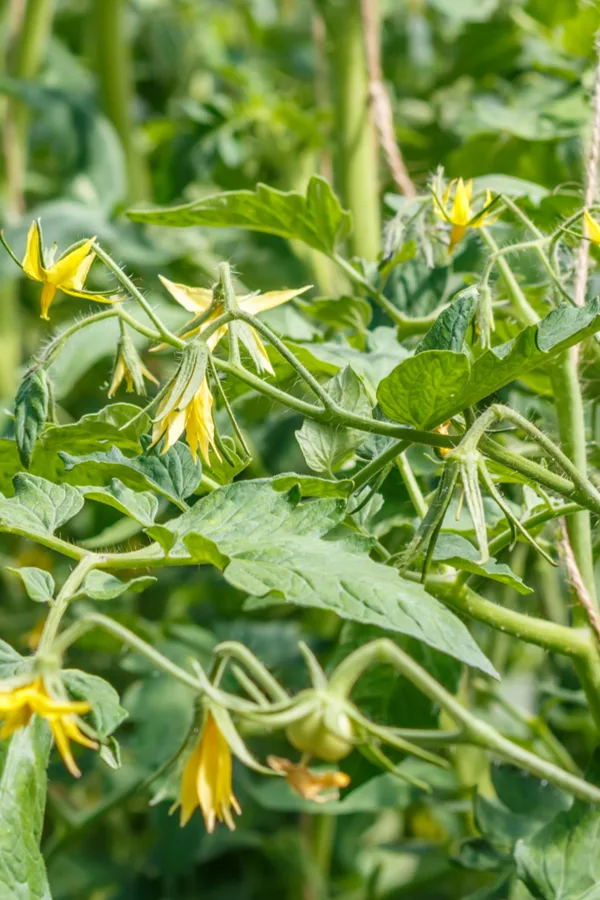
When plants become overgrown with too many stems, branches and foliage, those resources are wasted on maintaining all of that growth. And more importantly, not on producing tomatoes!
More importantly, plants need oxygen, light and water to thrive. And an overgrown plant can easily block those vital nutrients and needs.
Excess foliage is also an open invitation to pests and disease to wreak havoc on your tomato plant’s health and production levels. All the more reason that pruning makes all the difference.
How To Prune Tomato Plants & Pinch Tomato Suckers
Although pruning branches and pinching both involve removing foliage from a plant, there is a distinct difference between the two tasks. Both, however, are important in the process of keeping your plant’s resources from being wasted.
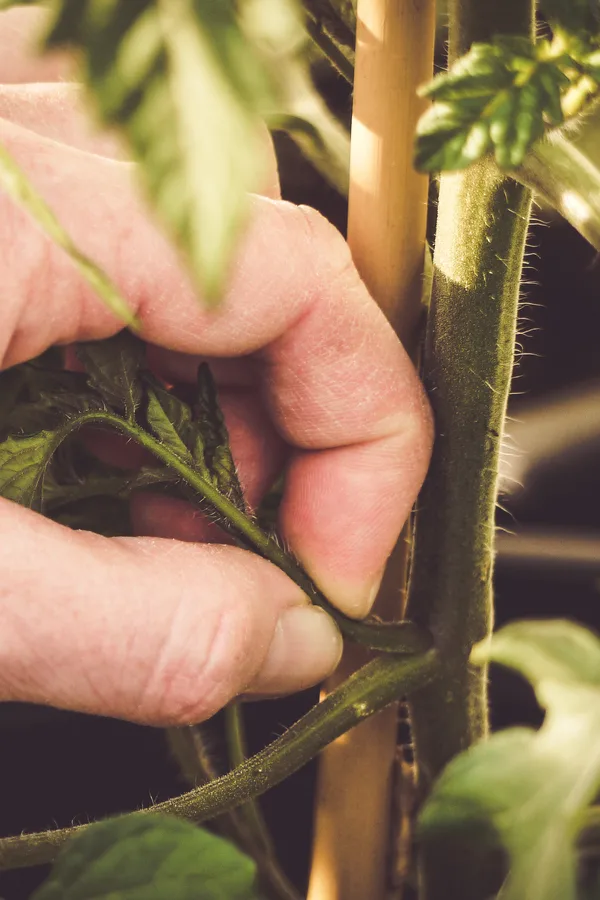
First, let’s tackle the subject of tomato suckers. Suckers are the small shoots that sprout from where a stem and branch connect. They form right at the “V” area (see photo above) between the two.
These small starts serve little purpose to the plant. They rarely ever produce blooms or fruit, but still require a portion of the plant’s resources to mature.
In addition, suckers also block air and light as they grow. Because of this, it’s important to remove these renegade branches as soon as they appear.
Most gardeners simply pinch off these small growths with their fingers or fingernails. In fact, that is exactly where the term “pinching off” comes from. These growths can also be removed quite easily with sharp scissors or small pruners if desired.
Check out our Podcast On How To Grow Great Tomatoes!
Be on the lookout for suckers in the early growing stages of your tomato plants. The quicker you remove them, the more resources your plant will have for bloom and flower production.
How To Prune Tomato Branches And Foliage – How To Prune Tomato Plants
Beyond pruning suckers from your plants, removing select branches and foliage will also pay big dividends. For this type of pruning, it’s all about clearing space to promote better air circulation, provide more light, and to keep pests and disease at bay.
Most important of all is to clear the stems and leaves from the very bottom of your tomato plants. Branches and foliage at the bottom of tomato plants create a lot of issues for the plant, and the gardener too.
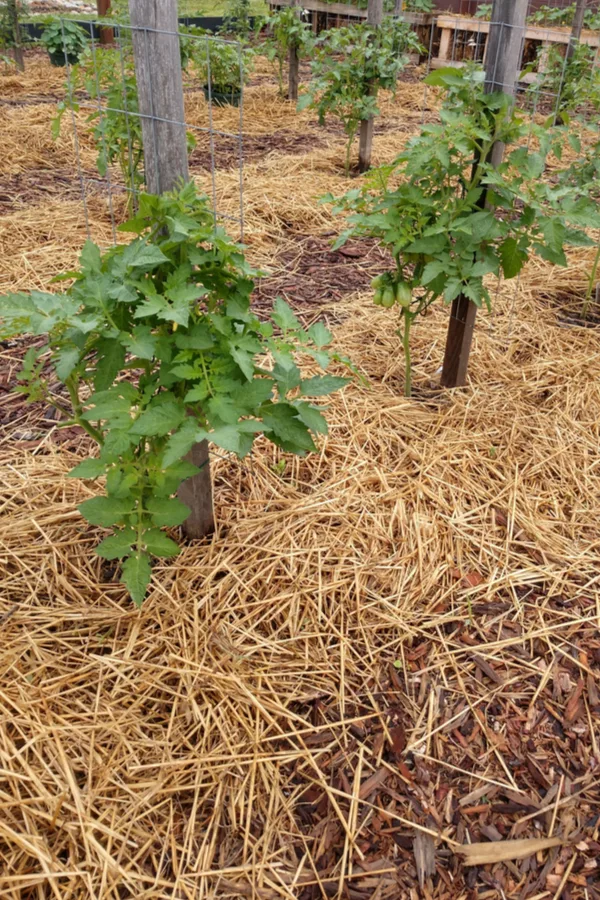
For starters, many of the diseases that affect tomatoes, such as blight, come from the soil. And foliage that touches the ground, or is close to the ground can easily have these deadly spores splashed on to their surface directly from the soil. (See : How To Avoid Tomato Blight)
But clearing away the bottom area of plants helps with other issues as well. It also allows air to more easily circulate throughout the plants, helping to keep plants from mold and mildew. All while promoting ripening of the fruit at a much faster pace.
In addition, removing bottom branches makes it harder for crawling garden pests to have an easy ride up onto plants. Even better, it gives a gardener room to easily water, weed, and maintain their plants right at the root zone.
Pruning Up – How To Prune Tomato Plants
So how much should you prune up under your plants?
For determinate varieties that tend to grow shorter and bushier, remove the first few branches at ground level. Keeping 6 to 8 inches of space clear at the ground level is a good rule of thumb.
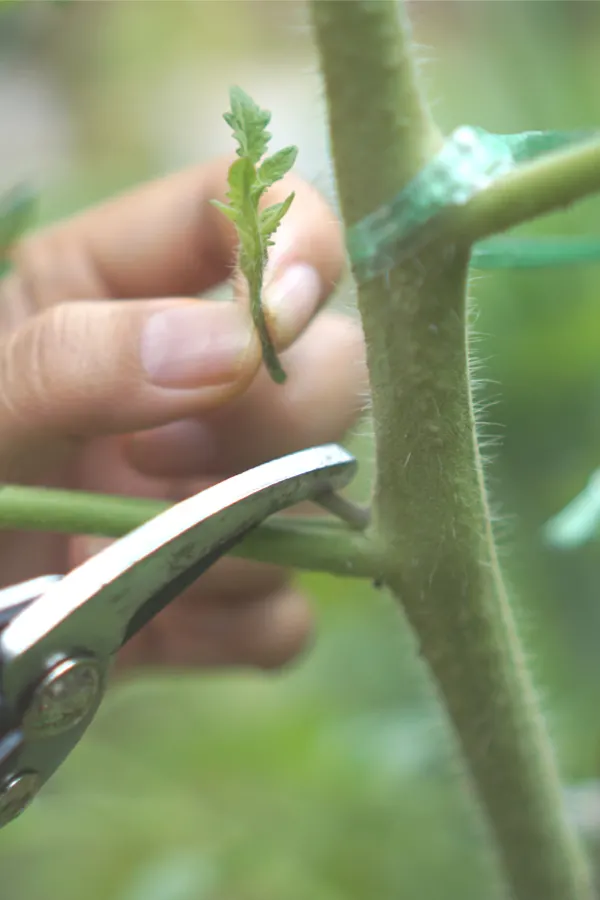
For indeterminate and larger tomatoes, take 8 to 12″ off at the bottom of each plant as they grow to their mature size. These larger plants need more space to really allow air, light and circulation in. (See : The Difference Between Indeterminate & Determinate Tomatoes)
Create Air Space In The Middle – How To Prune Tomato Plants
Beyond pruning the bottom of plants, it’s also important to keep the middle and top of plants under control as they grow.
As the season progresses, remove excess foliage from the middle of the plant to allow air and light to reach the middle of the plant. There is no need for massive pruning in the center section, just a branch or two to open up the middle.
Also be sure to trim back and eliminate renegade branches that shoot off to the side or grow into the next row. These wild branches use up a lot of the plants energy, and are easily damaged and broken in storms.
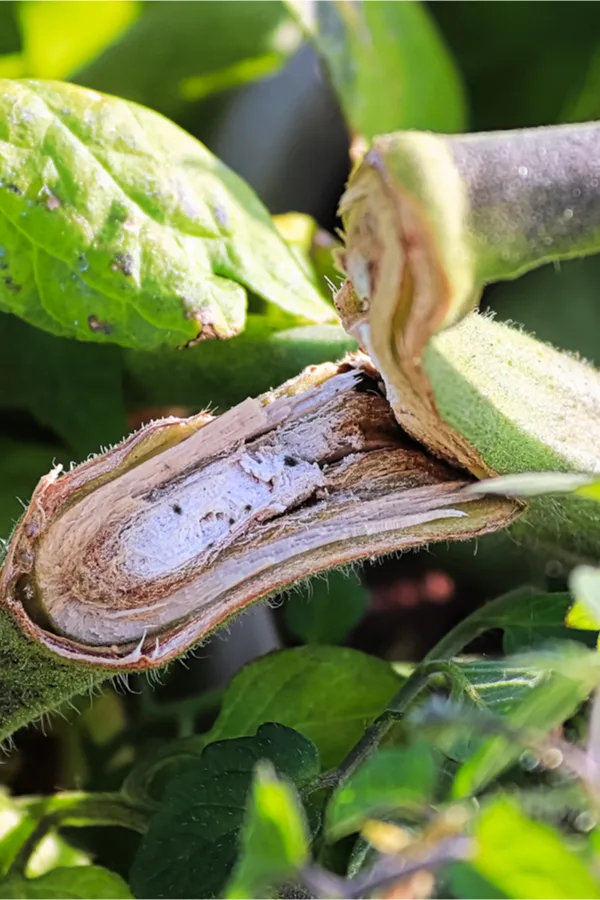
In addition, always remove any broken or damaged branches as soon as possible. Plants use up a lot of valuable resources attempting to heal and mend these branches.
And remember when pruning to always use a sharp pair of hand pruners, or heavy-duty garden scissors. Clean, crisp cuts are vital to quick and healthy healing.
As for when to prune your tomato plants, it’s best to prune in the early morning or evening to avoid the heat of the day. Plants are at their highest stress level during the hottest portions of the day, and pruning during this period can cause unneeded stress to the plant.
Either way, pruning tomato plants and pinching off suckers is a sure way to a healthier and more productive crop. So get out in the garden early this year and make sure your plants are in shape to grow your best crop ever!

This Is My Garden is a website dedicated to spreading the love and knowledge of gardening around the world. We publish two new garden articles each week. This article may contain affiliate links.
